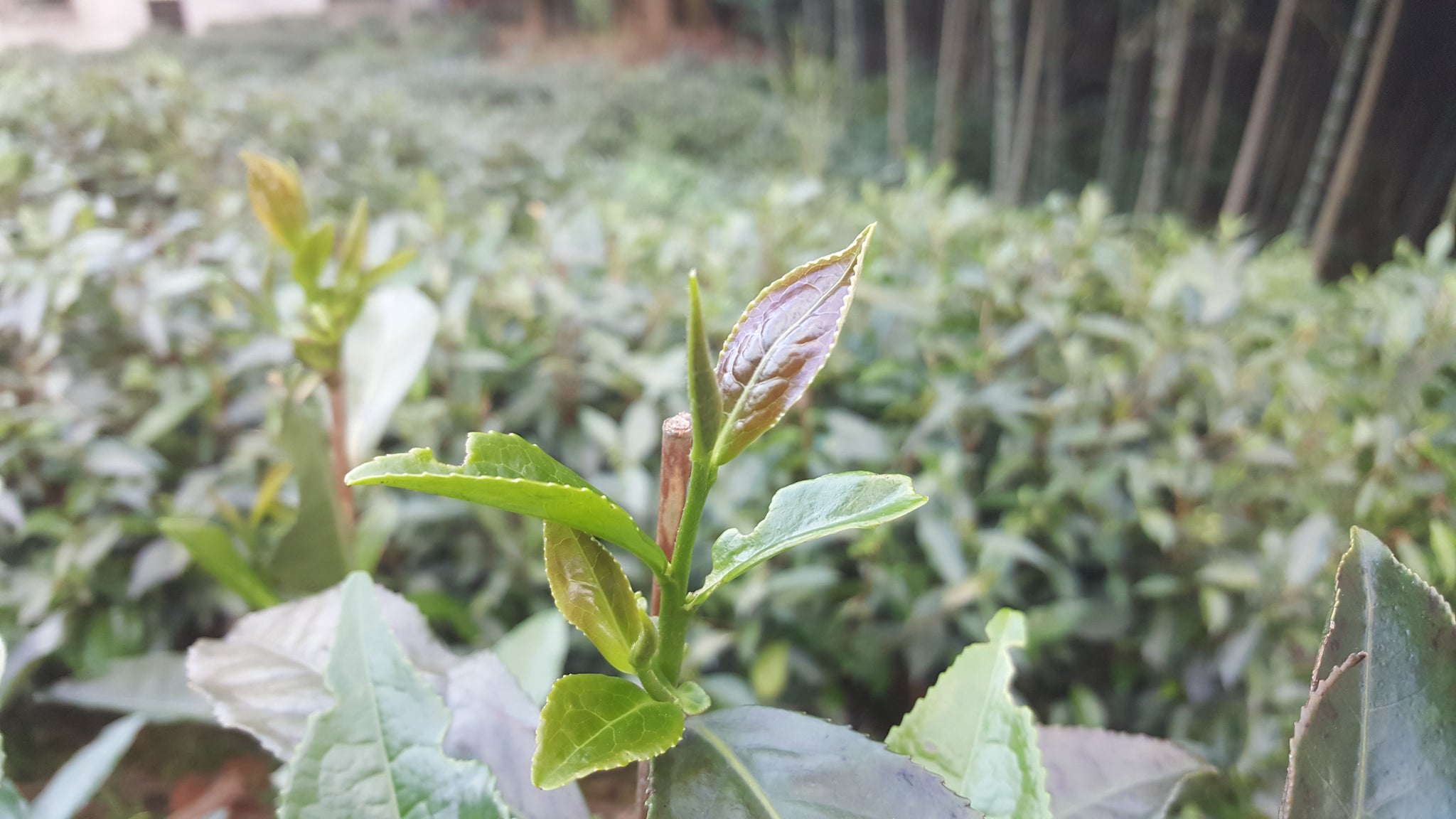So Why Fancy a Green Tea?
So Why Fancy a Green Tea?
Like a misunderstood fellow student in class, one often ignores the existence of the class of green tea. There are varied reasons for it. Our forefathers were mostly immigrants from Fujian and Guangdong, both of which make and drink a lot of wulong and red teas (the other being Taiwan), thereby importing the same drinking culture to Singapore. Green teas were not a regular drink since those days even till today. In fact, green teas were as alien to our forefathers as we are today.
What about Japanese sencha? Although sencha is historically a cultural relic of Tang dynasty imported into Japan 1,300 years ago, our association with Japanese teas is primarily because we used to be a Japanese colony. The ubiquitous matcha in cafes today is driven by business demands and the latte art trend, more than because it was born out of our history. What then is the familiar jasmine green tea? While pure green tea is not a regular drink of our forefathers, jasmine green tea could be a drink of choice because Fuzhou in southern Fujian is a main production region. Even so, 70% of Chinese tea production is pure green teas and a serious tea learner would be intrigued by this.
Even so, the green tea is always a challenge. It is difficult to brew, it is astringent, it is light and it has low brewing stamina. It usually does not have high fragrance like the wulong tea or can withstand the adulteration of milk and sugar like red tea (although very fine red tea are too delicate for that too). It is not as "natural" and healthy sounding like the white tea. So why fancy a green tea?
The green tea is usually the first harvest of the year. The cold and sunless climate during winter slows down the tea's growing and puts it into deep slumber. When the first warmth of the spring sun shines on the cold tea trees, new lives explode in the form of the new shoots and buds. This regeneration of life is the cumulation of energy and slow growth during the long winter season. When the farmer wakes up one day in mid spring, opens his window and looks out to find a coat of tender green peppering what used to be a monotone of dark green of the cold tea trees, he calls it the first flush of spring. The flush – the changing of colour with the new growth – is a representation of a new beginning, bringing with it new hope and new life.
When we drink green tea, we drink its freshness. Therefore, the delicate tea variety of sinensis is used. It then becomes counter-intuitive to have an aged green tea made from sinensis because it defeats its original purpose. A green tea should look small and green. When brewed in water, it springs alive and puff up like freshly plucked leaves. When the sun is still too soft to allow the tea trees to produce enough chlorophyll, the earliest and youngest pickings would be yellowish in colour. On this note, the earliest picking for West Lake Long Jing is small and yellow. The large and green teas sold at tourist shops are the overgrown.
A tea student probably learn green tea processing ahead of other classes of tea. This is because it involves all the basic steps and all other teas are variations of these basic steps. In fact, yellow tea and black tea are closely following the green tea process. You will be surprised to find out that a raw (unfermented) black tea is in fact a green tea made from the assamica variety which has bigger leaves and bolder flavours.
There are 4 methods of processing green tea. Although technically complex, they are essentially differentiated by whether the leaves are steamed, panfried, oven dried or sun dried. Sun drying is slow because of its very low temperature, thereby producing teas retaining its enzymatic flavours of fruits and flowers. Steaming highlights the tea plant’s original flavour of greenness, bringing out oceanic notes on top of the usual enzymatic notes. Oven drying is for the strongest tea types, when aromas are still retained after continuous hot air convention. Sometimes, aromas are muted from strong convection drying and the teas are used for blending with flowers and fruits. Pan frying brings out the sugar browning notes from intense Maillard reaction, creating soy bean, chestnuts and nutty flavours progressively as the heat intensifies.
The green tea has a full spectrum of aroma from seaweeds to nuts. Beside the alluring aroma, it is neither sour nor bitter if processed and brewed well. Being rich in catechins, it showcases tea’s defining medical properties of lowering blood sugar, improving blood circulation, protecting the liver and slimming. The same catechins is astringent, allowing palate cleansing when pairing with food.
Parchmen & Co is one of the few tea companies in Singapore which focuses a lot on green teas. Look nowhere else if you wish to learn and enjoy green tea. Rediscover green tea now with Parchmen & Co!

那为什么喝绿茶呢?
就像班上被误解的同学一样,人们常常忽略了绿茶的存在。这里有多种原因。我们的祖先大多是来自福建和广东,那里制作和饮用大量的乌龙茶和红茶(另一个是台湾)。这饮茶文化也随着飘洋过海来到新加坡。绿茶对我们的祖先而言就像我们今天一样感觉陌生。即使一个经常喝茶和泡茶的人,绿茶总还是一个挑战 – 它难以冲泡、有涩味、味道轻淡且不耐泡。它缺乏乌龙茶那样的高香气,或者像红茶那样经得起牛奶和糖的掺拌(虽然好的红茶也不浑浊其他调料)。它不像白茶那样“自然”和健康。那为什么喝绿茶呢?
有茶友可能会举日本煎茶的例子作为反驳说已经在喝绿茶。事实上,日本煎茶是1300年前传入日本的唐代文物,而我们与日本茶的联系主要是因为我们曾经是日本的殖民地。今天咖啡馆里无处不在的抹茶是由商业需求和拿铁艺术趋势驱动的,和我们本国的历史无关。那么大家熟悉的茉莉绿茶又是什么呢?虽然纯绿茶不是我们祖先的常规饮品,但茉莉绿茶作为福建南部福州主要的茶产品,我们祖先就不会感到陌生了。即便如此,70%的中国茶叶生产是纯绿茶类,身为一个认真的茶学爱好者会被它深深地吸引。
绿茶是春天的茶,是新一年的头棌。冬季寒冷无阳光的气候减缓了茶叶的生长速度,使其陷入沉睡。当春天的第一缕暖阳洒在冰冷的茶树上时,新的生命以新芽的形式爆发出来。这生命的再生是积累了整个冬季的能量所生。农夫在仲春的一天醒来,打开窗户向外望去,发现了点点滴滴的嫩绿色参出冰冷茶树的深绿色层,外国人称之为“春天的初次发芽”,中国人视为采摘期即将到来。茶树随着新的成长而转变的颜色代表着一个新的开始,带来新的希望。
我们喝绿茶是抢“鲜”喝,都是选用鲜嫩的中华种制作。所以绿茶一般没有陈放的概念。名优绿茶应该是细嫩均整。冲泡时,它膨胀并活跃起来,像是刚摘下的叶子一样。当太阳仍然太柔和而无法让茶树产生足够的叶绿素时,头采茶叶是绿黄色的,好比清明前采摘的西湖龙井(简称明前龙井)。旅游商店出售的大叶绿油油的茶都是迟些采摘的。 学茶人首先学绿茶工艺,因为它涉及所有基本步骤,其他的茶都是在这基本模式上变化,尤其是黄茶和黑茶。生(未发酵)黑茶实际上是由阿萨姆品种制成的绿茶,其叶子更大,味道更浓郁,陈放后才慢慢转变为熟黑茶。
绿茶的加工方法有四种。虽然技术上很复杂,但它们的区别主要在于叶子是蒸、炒、烤箱干燥还是晒干。由于其温度非常低,自然晒干和风干的速度很慢,因此此法产的茶保留了水果和鲜花的酶促风味。蒸制突显出了植物的原始绿色风味,在酶促香气之上带出海洋气息。烘箱干燥适用于最强悍的茶种,在持续的热气对流后仍保留香气。拼配花茶的茶料就采用此法,减弱的茶香才能平衡拼配花果的香气。炒茶带出强烈的美拉德反应产生的糖褐变味,随着热量的增加,逐渐产生大豆、栗子和坚果的味道。
绿茶具有从海藻到坚果的全方位香气。除了诱人的香气外,如果加工和冲泡到位,茶味平衡既不酸也不苦。它富含儿茶素,充分展现了茶具有降低血糖、改善血液循环、保护肝脏和减肥的保健功效。儿茶素也具有收敛性,与食物搭配时可以清洁味蕾。
百茶门是新加坡为数不多的专注于绿茶的茶叶公司。如果您想学习绿茶,别无他寻。现在就与百茶门一起重新发现绿茶!



